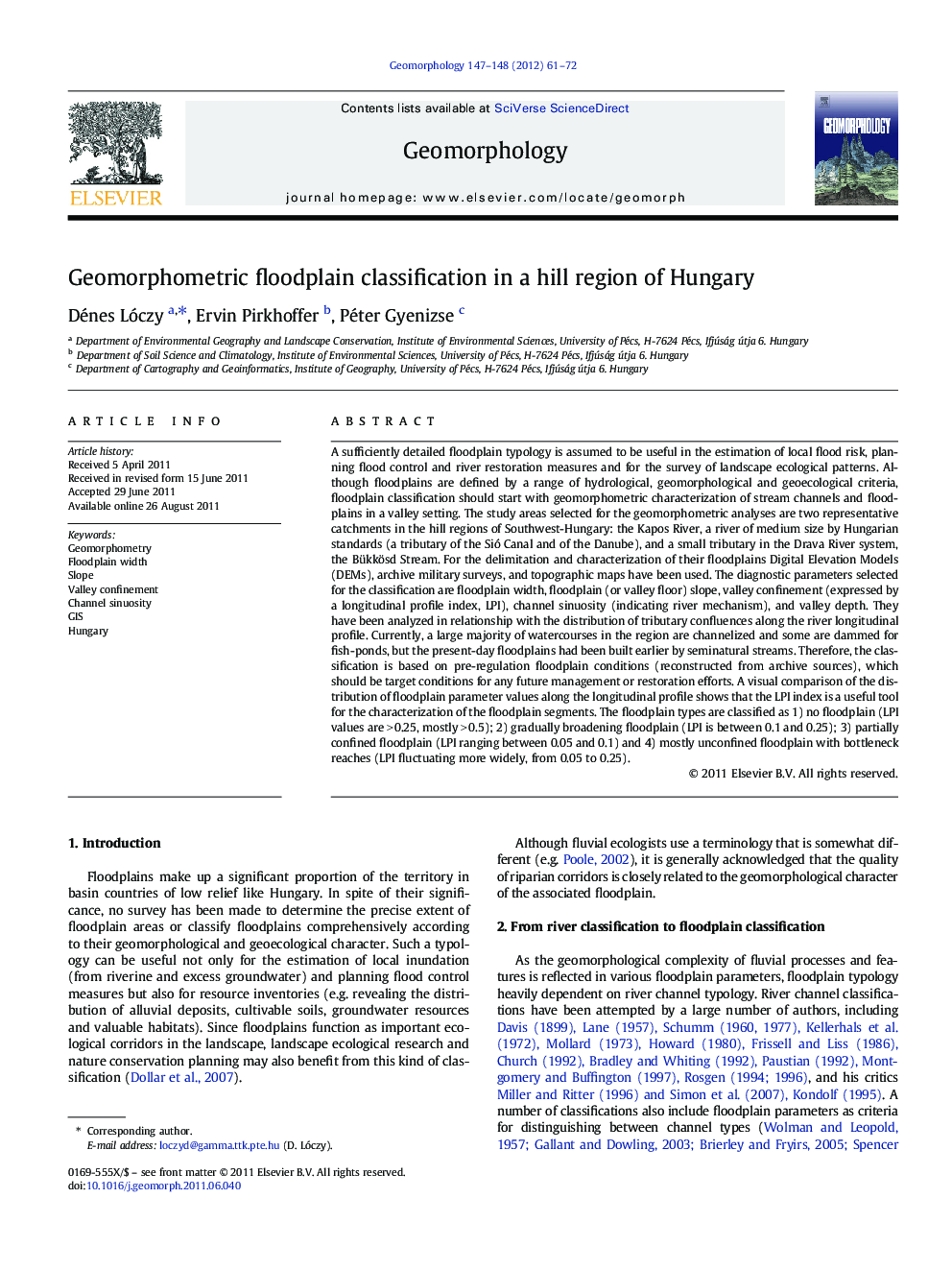| کد مقاله | کد نشریه | سال انتشار | مقاله انگلیسی | نسخه تمام متن |
|---|---|---|---|---|
| 4685255 | 1635485 | 2012 | 12 صفحه PDF | دانلود رایگان |

A sufficiently detailed floodplain typology is assumed to be useful in the estimation of local flood risk, planning flood control and river restoration measures and for the survey of landscape ecological patterns. Although floodplains are defined by a range of hydrological, geomorphological and geoecological criteria, floodplain classification should start with geomorphometric characterization of stream channels and floodplains in a valley setting. The study areas selected for the geomorphometric analyses are two representative catchments in the hill regions of Southwest-Hungary: the Kapos River, a river of medium size by Hungarian standards (a tributary of the Sió Canal and of the Danube), and a small tributary in the Drava River system, the Bükkösd Stream. For the delimitation and characterization of their floodplains Digital Elevation Models (DEMs), archive military surveys, and topographic maps have been used. The diagnostic parameters selected for the classification are floodplain width, floodplain (or valley floor) slope, valley confinement (expressed by a longitudinal profile index, LPI), channel sinuosity (indicating river mechanism), and valley depth. They have been analyzed in relationship with the distribution of tributary confluences along the river longitudinal profile. Currently, a large majority of watercourses in the region are channelized and some are dammed for fish-ponds, but the present-day floodplains had been built earlier by seminatural streams. Therefore, the classification is based on pre-regulation floodplain conditions (reconstructed from archive sources), which should be target conditions for any future management or restoration efforts. A visual comparison of the distribution of floodplain parameter values along the longitudinal profile shows that the LPI index is a useful tool for the characterization of the floodplain segments. The floodplain types are classified as 1) no floodplain (LPI values are > 0.25, mostly > 0.5); 2) gradually broadening floodplain (LPI is between 0.1 and 0.25); 3) partially confined floodplain (LPI ranging between 0.05 and 0.1) and 4) mostly unconfined floodplain with bottleneck reaches (LPI fluctuating more widely, from 0.05 to 0.25).
Journal: Geomorphology - Volumes 147–148, 15 April 2012, Pages 61–72